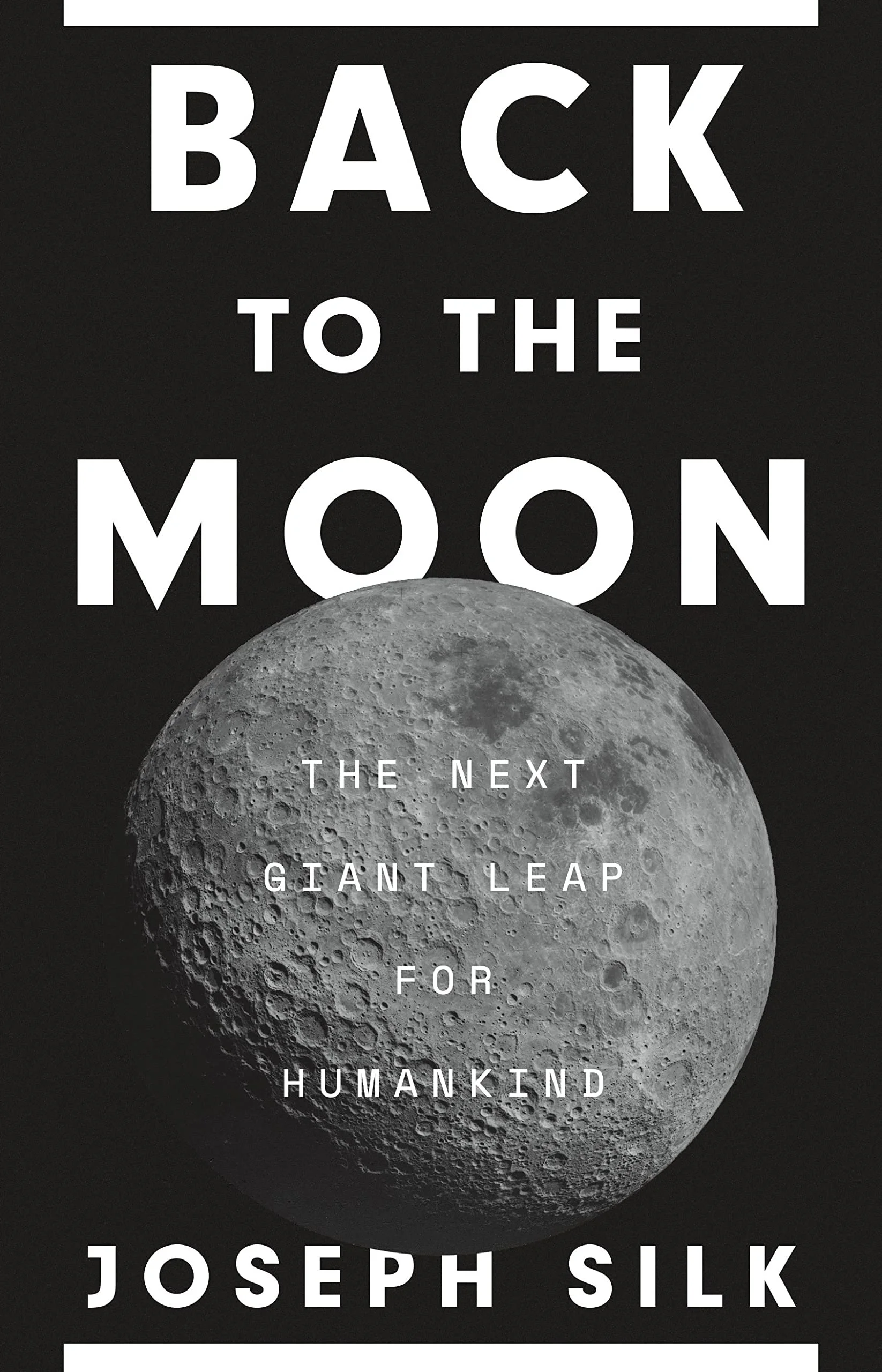Why Go Back to the Moon?
Astrophysicist Joseph Silk explores the landscape of the new lunar space race
Image credit: Rachel Lense for The Science Writer
by Hannah Grip
June 21, 2023
We are going back to the Moon. In the next decades, NASA, private companies, and other countries’ space agencies have plans to land humans and robots on the Moon and develop impressive infrastructure from lunar dust, or regolith.
Why return to the Moon? No single answer exists to this crucial question, which defines the next chapters of our lunar history. This line of inquiry drives Joseph Silk’s Back to the Moon: The Next Giant Leap for Humankind, and the book responds with the hope that we might open the question to all. In the first chapter, Silk summarizes what he sees as the given variables:
“As humanity seeks new challenges, the Moon offers dazzling new horizons for leisure and sports activities … The Moon will initially be a playground for the rich, but change over time is certain once low-cost space transport systems are developed. Giant lunar parks for leisure and relaxation will be established, and low-cost housing will be designed to host the necessary support personnel to organize mass tourism.”
Silk seems to understand other commercial uses besides space tourism as inevitable. The regolith is rich with deposits of rare-earth minerals, making mining attractive. And the Moon, with its low gravity, lack of atmosphere, and water ice dispersed through the surface dust, promises to make missions to asteroids, other solar system bodies, and beyond less expensive.
So there’s a set of commercial aims in place. Back to the Moon wants the reader to consider the value of bringing an additional goal to the Moon: an agenda of scientific inquiry. This agenda could answer humanity’s questions about our solar system’s and universe’s past, including the origins and nature of life.
The cover for the book Back to the Moon: The Next Giant Leap for Humankind by Joseph Silk. Image credit: Princeton University Press
The Moon holds the secrets of its creation and many more. By studying the Moon’s composition, scientists could understand better how it formed and when. The best Moon origin theory holds that the Moon formed some 4.5 billion years ago, when the solar system was a more chaotic place and a Mars-sized body slammed into Earth. The Moon’s lack of atmosphere means that scientists will find relics of asteroids there that did not burn up on their way to the surface, in contrast with Earth. And asteroids are great clues to the early solar system. What will they reveal?
The Moon is tidally locked with Earth, meaning that one side faces Earth at all times, and the other always faces away. This opens another line of investigation — an inquiry into the earliest universe. The far side of the Moon is free from Earth's radio interference, and the surface of the Moon is frigid and very dark when it faces away from the Sun. The signals scientists need to probe the early universe reach the Moon better than they do the surface of the Earth, because the Moon does not have an atmosphere to block and scatter them. On the far side, Silk says, scientists could set up large telescopes of all sorts: radio, optical, and infrared.
When Silk writes about these endeavors, he writes in terms of what we know and what we’ll learn. This is a scientific “we,” a pronoun implying that the body of knowledge belongs to us all. And this vision for the Moon differs radically from the commercial one, with its mining and tourism. Commercial use of the Moon, by contrast, is not guaranteed to return shared benefits.
These two aims are interrelated; Back to the Moon notes that a commercial infrastructure would make science missions less expensive and more feasible. But what happens when commercial and scientific goals conflict? For example, conflict could arise between the commercial need to develop robust surface communications and the aims of radio astronomy. Silk proposes that we reserve a band of low radio frequencies for listening to the early universe. But with Earth-based and low-Earth orbit optical astronomy yielding images smeared with Starlink satellite tracks, one wonders how scientific aims will really fare in a commercial landscape.
Complicating things further, NASA and U.S. commercial interests are not alone in making big plans for the Moon. Back to the Moon might have been a stronger book had it addressed more completely how our geopolitical problems will play out in the new space race. But geopolitics is not a strength of the author, who is an astrophysicist.
The book’s second-to-last chapter is peppered with essential questions and concepts but delivers few details: “How do we cope with territorial claims on the Moon?” “We can hope for an international lunar treaty, but so far, this has been elusive.” “The mining industry is notorious for terrestrial pollution. How can this be avoided on the Moon?” “Historically, the breakdown of law and order has created immense problems for terrestrial society. Let’s avoid this on the Moon.” “Let’s hope that we can learn from history.”
Readers will likely agree with these broad concerns and might desire a framework for addressing them and safeguarding the scientific projects that promise to enrich us all. Perhaps it’s too much to ask of one book to frame the relevant questions and provide answers. Back to the Moon successfully prompts readers to think through why we’re going back to the Moon, and Silk makes a compelling case for putting science on the lunar agenda. But the book falls short in treating the many geopolitical questions that naturally follow.
Will a new era of leadership, scholarship, and writing develop around lunar geopolitics and the interaction of commercial and scientific aims in space? These topics will, indeed, affect us all.
Hannah Grip
Hannah Grip lives in Longmont, Colorado, and loves reading, being outside, baking, and creating and solving crossword puzzles. She is a scientific and technical communications associate for Nabla Zero Labs, a research and development organization specializing in astrodynamics and spacecraft trajectory optimization, and she is currently enrolled in the Johns Hopkins University Science Writing Program.
Senior Editor: Anne N. Connor
Art & Layout Editor: Rachel Lense
Copy Editor: Christopher Graber













